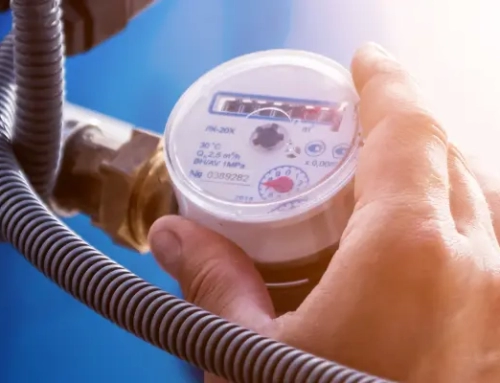Solar panel optimisers: the essential guide

In a world where renewable energy sources are more crucial than ever, solar power stands out as a key player. But as with any technology, there’s always room for improvement. Enter solar panel optimisers, a game-changing solution designed to improve the efficiency and effectiveness of solar panels.
If you’ve been considering installing solar panels or you just want to make the most of your current set-up, understanding solar panel optimisers could be your next step towards a greener future. This guide will explore what solar panel optimisers are, how they work, and whether a solar panel optimiser is right for you.
What are solar panel optimisers?
A solar panel optimiser is a device that integrates into your solar panel system to maximise each panel’s energy production. Unlike a traditional solar power system, where the performance of every panel is determined by the lowest-performing panel, optimisers allow each panel to perform at its best.
How do solar panel optimisers work?
Solar panel optimisers work by utilising Maximum Power Point Tracking (MPPT) technology, which adjusts the voltage and current of each panel to make sure it operates at peak efficiency regardless of the conditions. This optimisation process helps reduce lost power caused by external conditions, resulting in a more consistent and higher power output.
The goal of a solar panel optimiser is to harness the maximum amount of energy from each solar panel in a system. External conditions like shading, dust or dirt on the panels, or panel variations can reduce the efficiency of the entire solar panel system, even if just one panel is affected.
For example, say one solar panel is covered by shade from a tree or passing cloud and can only produce a 50% output. All the other panels in that string will then mirror the output of the shaded panel, even if they’re not in the shade, bringing your overall output down to 50%.
With an optimiser, any underperforming panels are optimised to produce the best possible output. This means your solar panels will perform more efficiently and produce more energy, even in less-than-ideal conditions.

The pros & cons
Now you’re more familiar with what solar panel optimisers are and how they work, let’s look at the pros and cons:
Pros
Cons

Types of solar panel optimisers
There are four main types of solar optimisers: DC optimisers, smart panels, maxim panels and microinverters. The best type for you will depend on your budget, available space and whether you have an existing system already, so let’s explore:
1. DC optimisers
DC optimisers attach to traditional solar panels and help regulate the output of every panel. Each optimiser is connected and joined to an inverter, optimising the DC electricity produced by your panels before it gets converted to AC electricity.
The best part is that you don’t need a DC optimiser on every panel. You can simply add the device to any panels prone to underperforming and that’ll optimise the entire system’s performance.
Best for: those with traditional solar panels wanting to boost their performance, or with minimal shading issues.
2. Smart panels
Also known as integrated DC optimisers, smart solar panels come with the optimiser already built in, giving you optimised energy from the get-go.
As each panel has a built-in optimiser, you can’t single out the underperforming panels as you would with a traditional DC optimiser.
That said, buying smart panels can work out cheaper than buying standard solar panels with separate optimisers, depending on how many you need.
Best for: those looking to start from scratch or update their system.
3. Maxim panels
Maxim panels can be considered solar cell optimisers, rather than solar panel optimisers.
Solar cells are like the building blocks of a solar panel: multiple solar cells make up a solar panel, and multiple solar panels make up a module.
The difference maxim panel optimisation brings is that each cell string is optimised, unlike a module-level optimiser which works across the whole panel. Ultimately, any partially-shaded modules will be less impacted, resulting in a greater and more efficient energy yield.
You can’t buy Maxim panels as such – the company, Maxim Integrated, make chips which are then used by solar panel manufacturers like Jinko Solar and Suntech.
Best for: spaces prone to shading issues.
4. Microinverters
Microinverters are simply mini inverters. Not only do they optimise the output of each solar panel, but they also immediately convert the electricity from DC to AC at the solar panel level.
Each solar panel has its own integrated optimiser and inverter, allowing them to function independently. This prevents any underperforming panels impacting the rest of the system, and means you can scale your system with ease.
Best for: those looking to start small initially and add more solar panels down the line.
Which brands are best?
Another point to consider is which brands to look out for. Tigo and SolarEdge are two of the most popular.
Tigo’s clever optimisation technology means their optimisers can work with any inverter. SolarEdge offer integrated systems where the optimisers, inverter and monitoring system are all SolarEdge-made, meaning no compatibility issues.

Do they need maintenance?
Optimisers are made to be low maintenance, just like your solar panels. Once they’re up and running, they get to work in the background, quietly optimising your solar production.
That said, as with any electronic device, they can be susceptible to issues. Luckily, the monitoring system will soon flag any issues that arise so you can ask your installer to investigate.
Are solar panel optimisers worth it?
While it’s true that adding an optimiser to your solar panel set up will increase the overall cost, it’s worth considering the long-term saving. By helping you battle against preventable power losses, optimisers help bring a quicker return on investment as well as increased energy savings. Not to mention the peace of mind that comes from knowing every panel is pulling its weight, rain or shine.
As you now know, solar panel optimisers can ramp up your energy production by helping each panel perform at its best, regardless of external conditions.
Want to improve your solar panels’ performance? Get in touch for a free assessment today. With over 60 years of experience, we’re your experts in all things energy so you can trust we’ll find the best solution for you and your budget.





